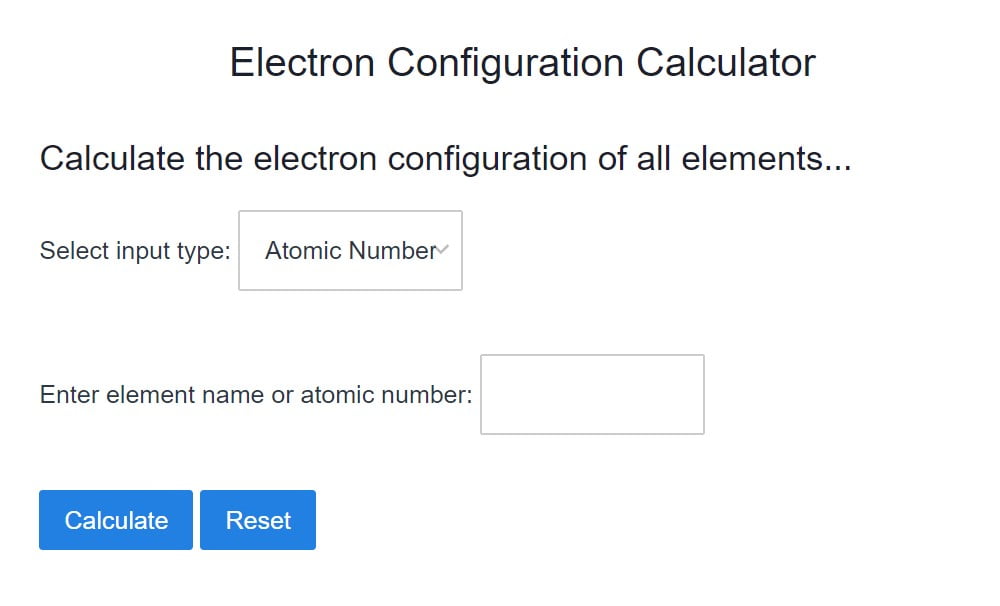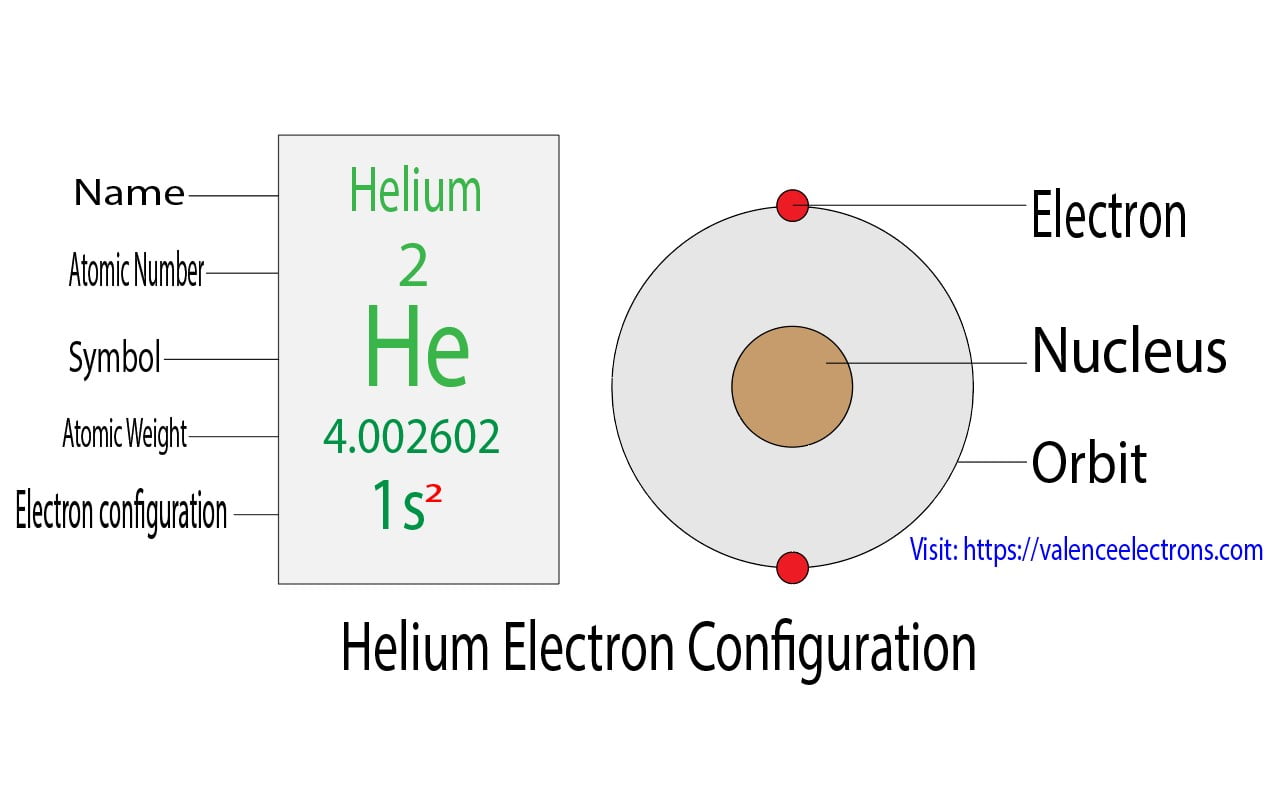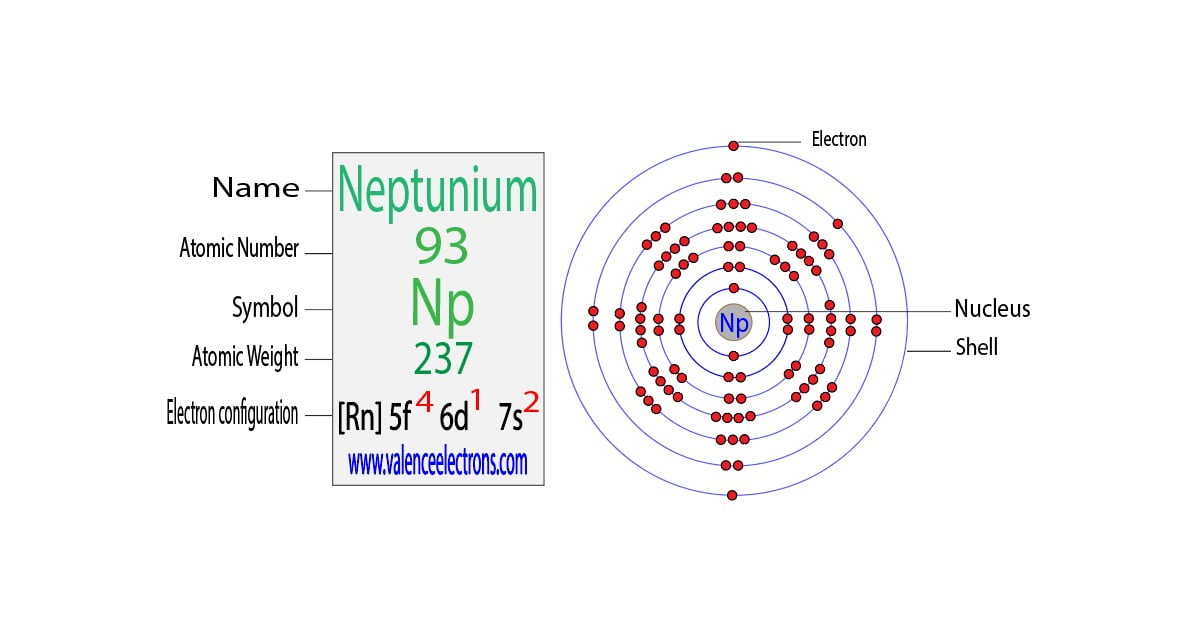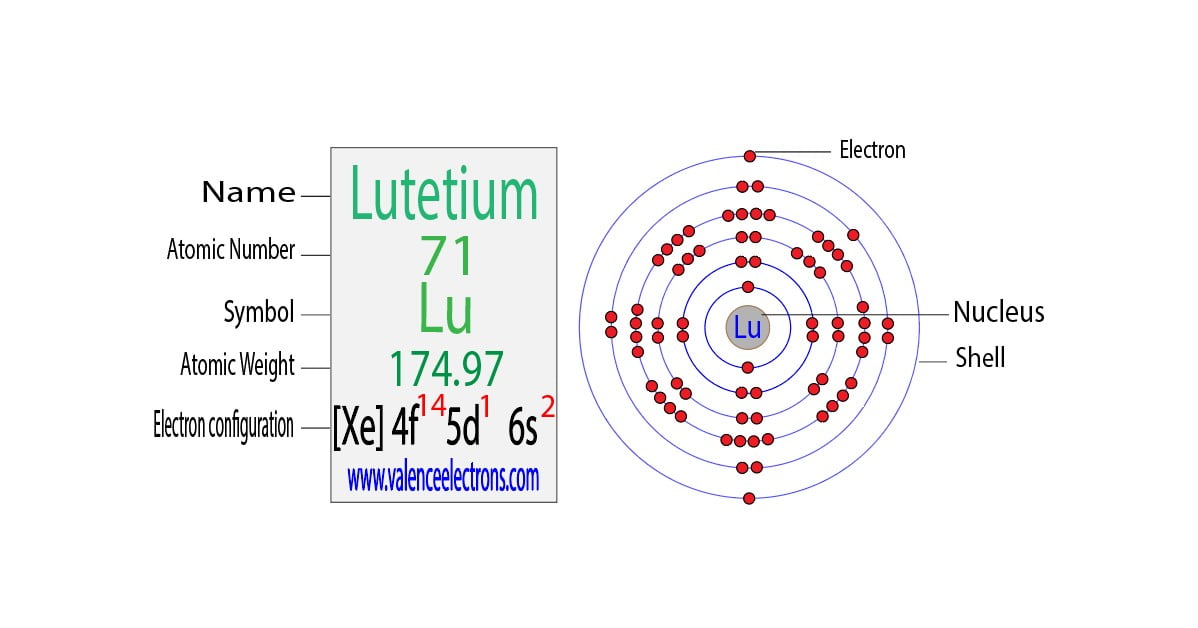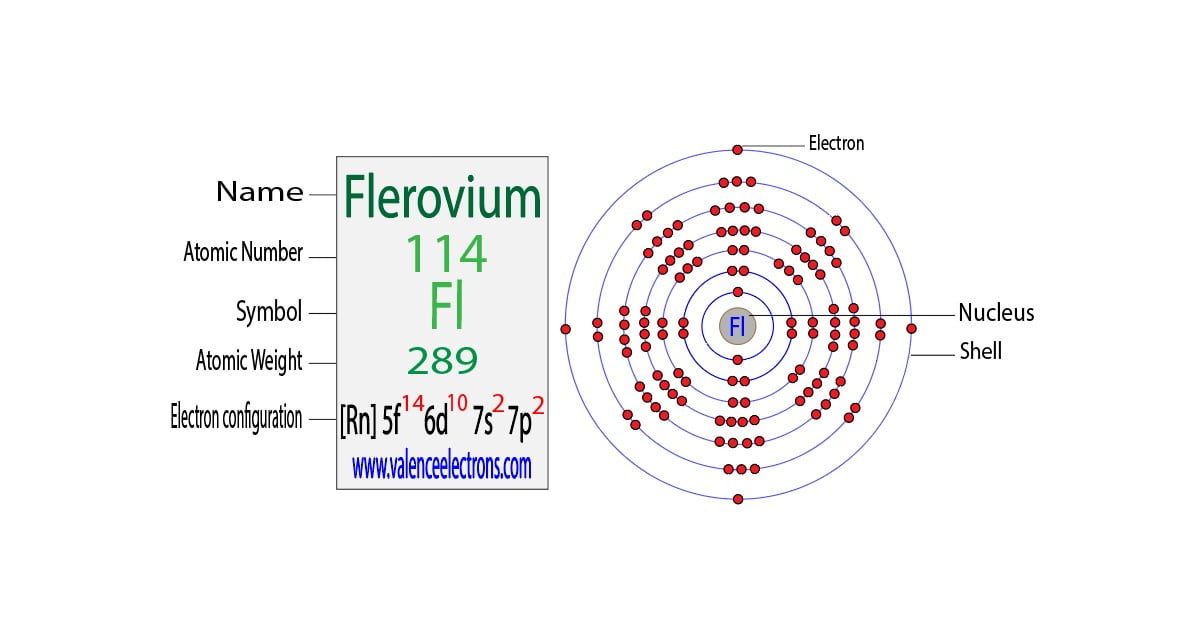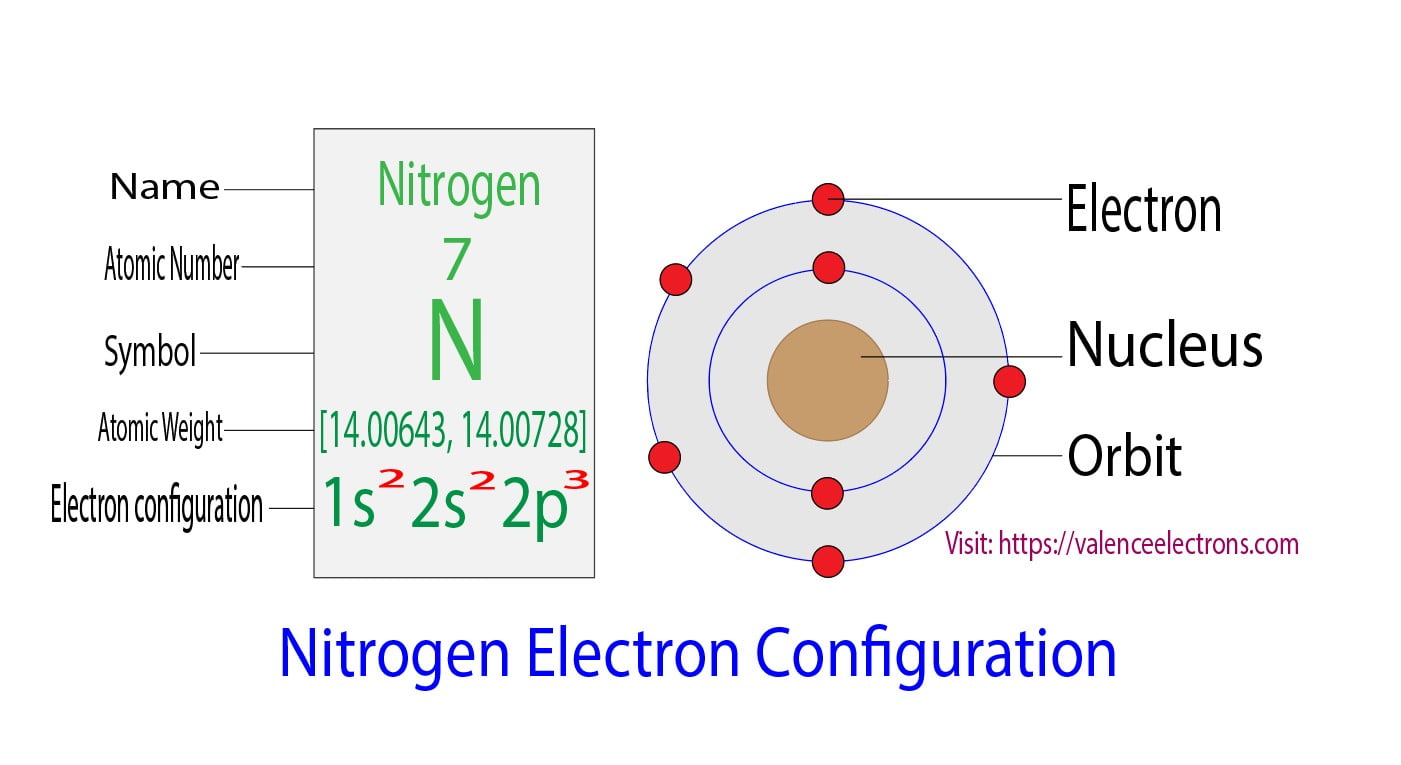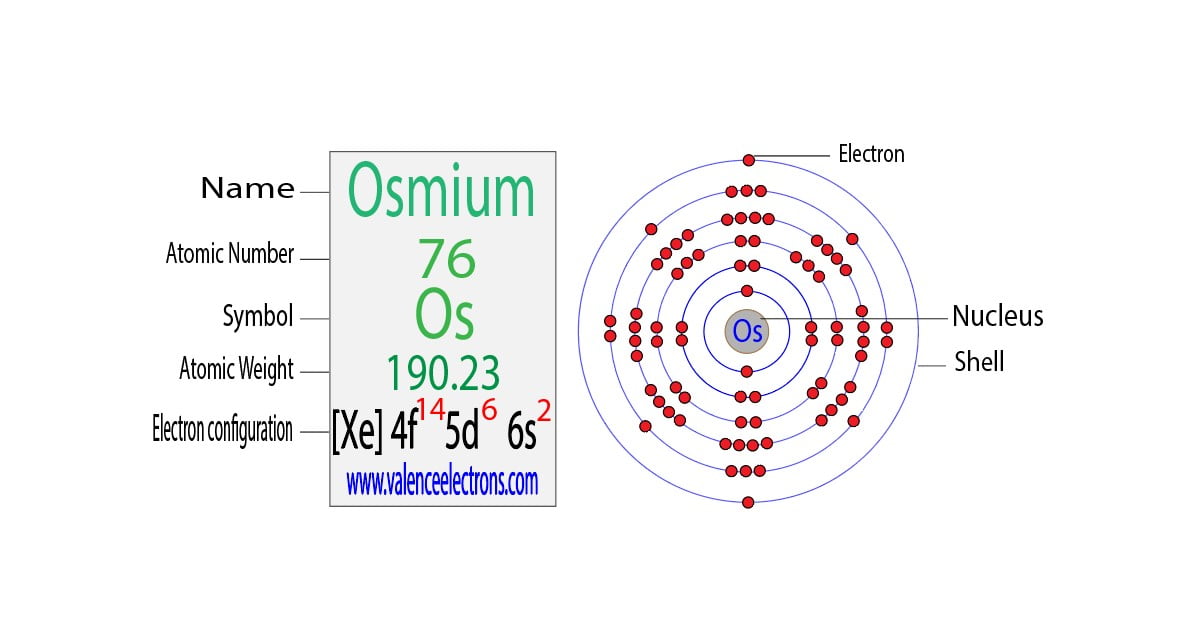Electron Configuration for Fluorine (F, and F– ion)
Fluorine is the 9th element in the periodic table and its symbol is ‘F’. In this article, I have discussed in detail how to easily write the complete electron configuration of fluorine.
What is the electron configuration for fluorine?
The total number of electrons in fluorine is nine. These electrons are arranged according to specific rules in different orbitals.
The arrangement of electrons in fluorine in specific rules in different orbits and orbitals is called the electron configuration of fluorine.
The electron configuration of fluorine is [He] 2s2 2p5, if the electron arrangement is through orbitals. Electron configuration can be done in two ways.
- Electron configuration through orbit (Bohr principle)
- Electron configuration through orbital (Aufbau principle)
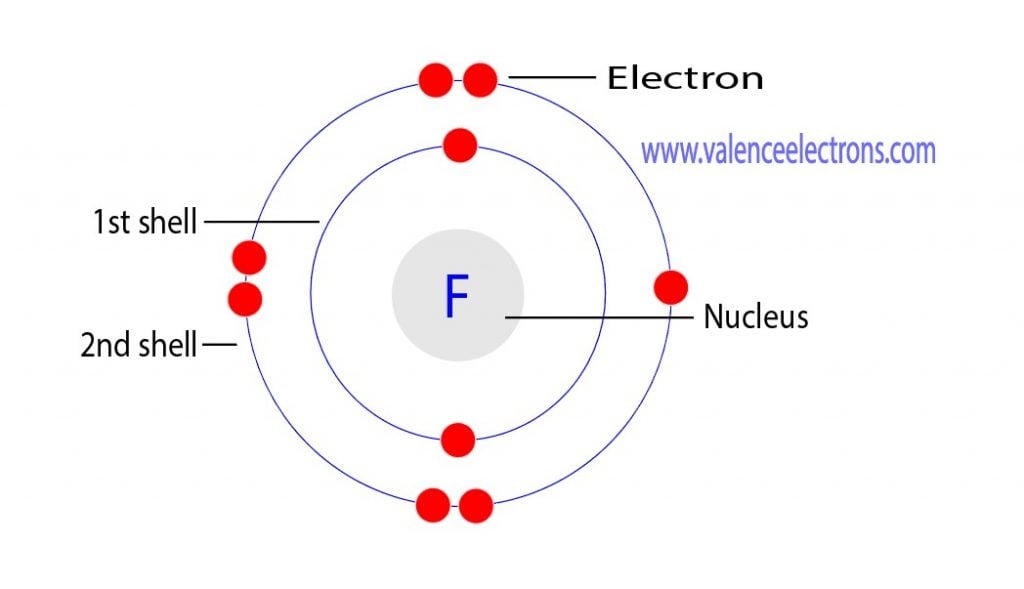
Electron configuration through orbitals follows different principles. For example Aufbau principle, Hund’s principle, and Pauli’s exclusion principle.
Electron configuration of fluorine through orbit
Scientist Niels Bohr was the first to give an idea of the atom’s orbit. He provided a model of the atom in 1913. The complete idea of the orbit is given there.
The electrons of the atom revolve around the nucleus in a certain circular path. These circular paths are called orbit(shell). These orbits are expressed by n. [n = 1,2,3,4 . . . The serial number of the orbit]
K is the name of the first orbit, L is the second, M is the third, and N is the name of the fourth orbit. The electron holding capacity of each orbit is 2n2.
| Shell Number (n) | Shell Name | Electrons Holding Capacity (2n2) |
| 1 | K | 2 |
| 2 | L | 8 |
| 3 | M | 18 |
| 4 | N | 32 |
For example,
- n = 1 for K orbit.
The maximum electron holding capacity in K orbit is 2n2 = 2 × 12 = 2. - For L orbit, n = 2.
The maximum electron holding capacity in L orbit is 2n2 = 2 × 22 = 8. - n=3 for M orbit.
The maximum electrons holding capacity in M orbit is 2n2 = 2 × 32 = 18. - n=4 for N orbit.
The maximum electrons holding capacity in N orbit is 2n2 = 2 × 42 = 32.
Therefore, the maximum electron holding capacity in the first shell is two, the second shell is eight and the 3rd shell can have a maximum of eighteen electrons. The atomic number is the number of electrons in that element.
The atomic number of fluorine is 9. That is, the number of electrons in fluorine is 9. Therefore, a fluorine atom will have two electrons in the first shell and seven in the 2nd shell.
Therefore, the order of the number of electrons in each shell of the fluorine atom is 2, 7. Electrons can be arranged correctly through orbits from elements 1 to 18.
The electron configuration of an element with an atomic number greater than 18 cannot be properly determined according to the Bohr atomic model. The electron configuration of all the elements can be done through the orbital diagrams.
Electron configuration of fluorine through orbital
Atomic energy shells are subdivided into sub-energy levels. These sub-energy levels are also called orbital. The most probable region of electron rotation around the nucleus is called the orbital.
The sub-energy levels depend on the azimuthal quantum number. It is expressed by ‘l’. The value of ‘l’ is from 0 to (n – 1). The sub-energy levels are known as s, p, d, and f.
| Orbit Number | Value of ‘l’ | Number of subshells | Number of orbital | Subshell name | Electrons holding capacity | Electron configuration |
| 1 | 0 | 1 | 1 | 1s | 2 | 1s2 |
| 2 | 0 1 | 2 | 1 3 | 2s 2p | 2 6 | 2s2 2p6 |
| 3 | 0 1 2 | 3 | 1 3 5 | 3s 3p 3d | 2 6 10 | 3s2 3p6 3d10 |
| 4 | 0 1 2 3 | 4 | 1 3 5 7 | 4s 4p 4d 4f | 2 6 10 14 | 4s2 4p6 4d10 4f14 |
For example,
- If n = 1,
(n – 1) = (1–1) = 0
Therefore, the value of ‘l’ is 0. So, the sub-energy level is 1s. - If n = 2,
(n – 1) = (2–1) = 1.
Therefore, the value of ‘l’ is 0, 1. So, the sub-energy levels are 2s, and 2p. - If n = 3,
(n – 1) = (3–1) = 2.
Therefore, the value of ‘l’ is 0, 1, 2. So, the sub-energy levels are 3s, 3p, and 3d. - If n = 4,
(n – 1) = (4–1) = 3
Therefore, the value of ‘l’ is 0, 1, 2, 3. So, the sub-energy levels are 4s, 4p, 4d, and 4f. - If n = 5,
(n – 1) = (n – 5) = 4.
Therefore, l = 0,1,2,3,4. The number of sub-shells will be 5 but 4s, 4p, 4d, and 4f in these four subshells it is possible to arrange the electrons of all the elements of the periodic table.
| Sub-shell name | Name source | Value of ‘l’ | Value of ‘m’ (0 to ± l) | Number of orbital (2l+1) | Electrons holding capacity 2(2l+1) |
| s | Sharp | 0 | 0 | 1 | 2 |
| p | Principal | 1 | −1, 0, +1 | 3 | 6 |
| d | Diffuse | 2 | −2, −1, 0, +1, +2 | 5 | 10 |
| f | Fundamental | 3 | −3, −2, −1, 0, +1, +2, +3 | 7 | 14 |
The orbital number of the s-subshell is one, three in the p-subshell, five in the d-subshell and seven in the f-subshell. Each orbital can have a maximum of two electrons.
The sub-energy level ‘s’ can hold a maximum of two electrons, ‘p’ can hold a maximum of six electrons, ‘d’ can hold a maximum of ten electrons, and ‘f’ can hold a maximum of fourteen electrons.
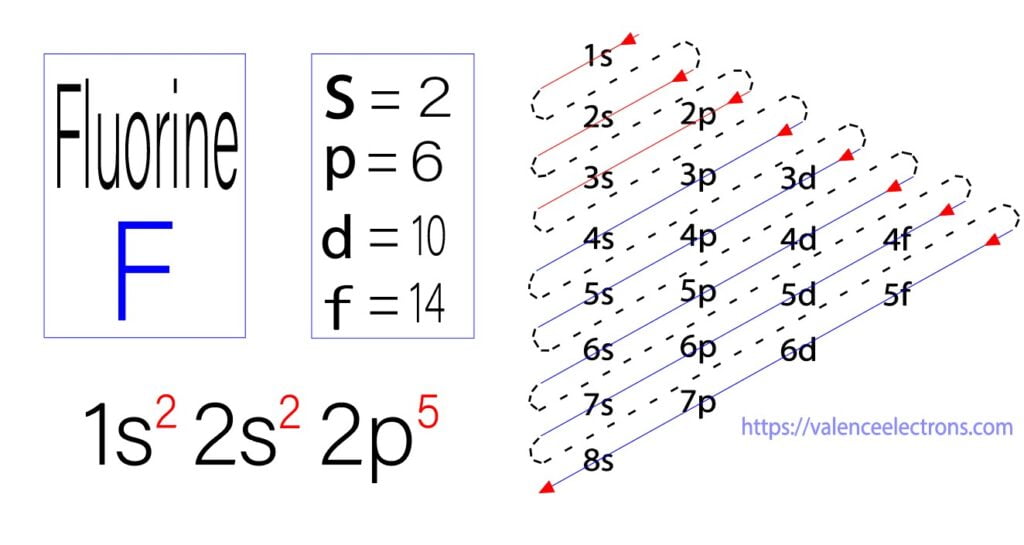
Aufbau is a German word, which means building up. The main proponents of this principle are scientists Niels Bohr and Pauli. The Aufbau method is to do electron configuration through the sub-energy level.
The Aufbau principle is that the electrons present in the atom will first complete the lowest energy orbital and then gradually continue to complete the higher energy orbital.
The energy of an orbital is calculated from the value of the principal quantum number ‘n’ and the azimuthal quantum number ‘l’. The orbital for which the value of (n + l) is lower is the low energy orbital and the electron will enter that orbital first.
| Orbital | Orbit (n) | Azimuthal quantum number (l) | Orbital energy (n + l) |
| 3d | 3 | 2 | 5 |
| 4s | 4 | 0 | 4 |
Here, the energy of 4s orbital is less than that of 3d. So, the electron will enter the 4s orbital first and enter the 3d orbital when the 4s orbital is full.
The method of entering electrons into orbitals through the Aufbau principle is 1s 2s 2p 3s 3p 4s 3d 4p 5s 4d 5p 6s 4f 5d 6p 7s 5f 6d.
The first two electrons of fluorine enter the 1s orbital. The s-orbital can have a maximum of two electrons. Therefore, the next two electrons enter the 2s orbital.
The p-orbital can have a maximum of six electrons. So, the next five electrons enter the 2p orbital. Therefore, the fluorine complete electron configuration will be 1s2 2s2 2p5.
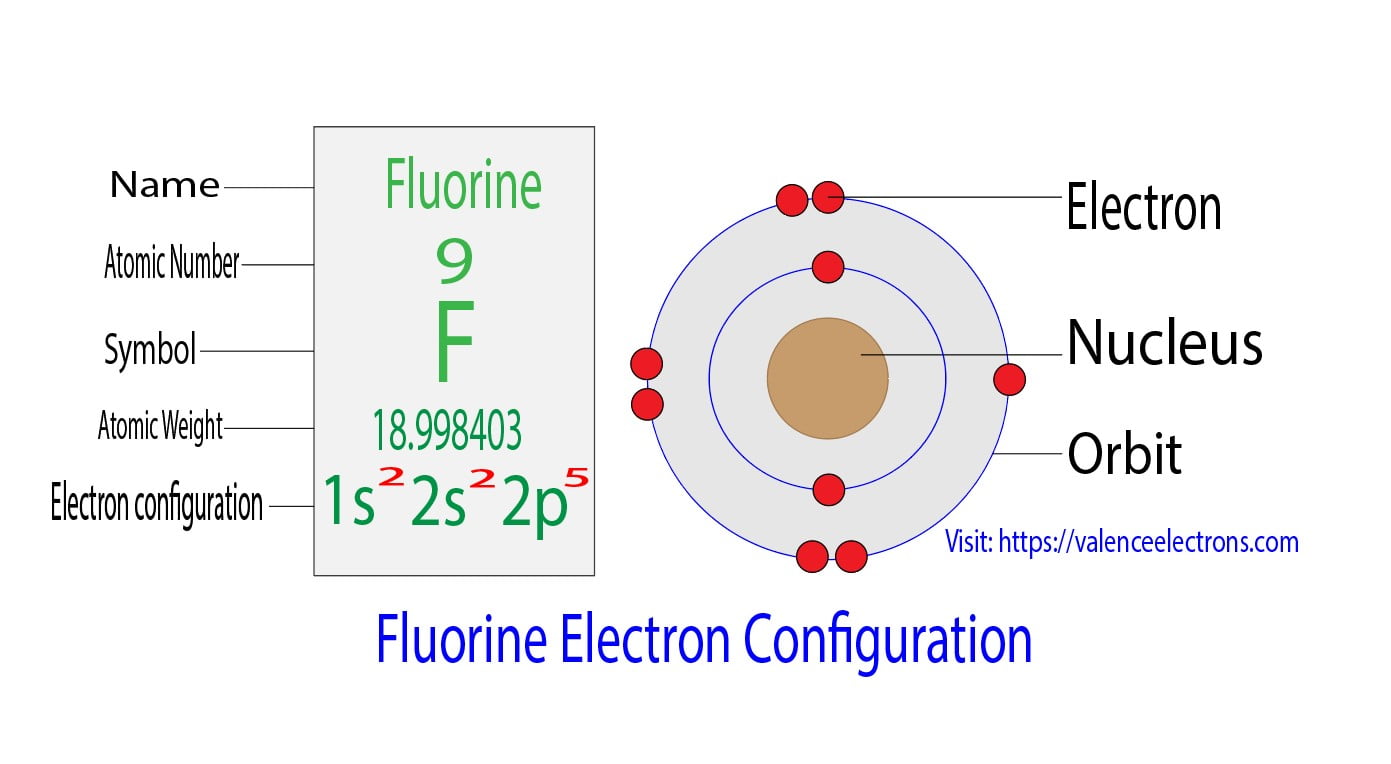
Note: The unabbreviated electron configuration of fluorine is [He] 2s2 2p5. When writing an electron configuration, you have to write serially.
Video for Fluorine Electron Configuration
Electron configuration of fluorine in the excited state
Atoms can jump from one orbital to another orbital in the excited state. This is called a quantum jump. The ground-state electron configuration of fluorine is 1s2 2s2 2p5.
We already know that the p-subshell has three orbitals. The orbitals are px, py, and pz and each orbital can have a maximum of two electrons.
In the fluorine ground-state electron configuration, the five electrons of the 3p orbital are located in the px, py, and pz orbitals. Then correct electron configuration of fluorine in the ground state will be 1s2 2s2 2px2 2py2 2pz1.
This electron configuration shows that the last shell of the fluorine atom has an unpaired electron(2pz1). So the valency of fluorine is 1.
When fluorine atoms are excited, then fluorine atoms absorb energy. As a result, an electron in the 2py orbital jumps to the 3s orbital. Therefore, the electron configuration of fluorine(F*) in an excited state will be 1s2 2s2 2px2 2py1 2pz1 3s1.
Fluoride ion(F–) electron configuration
After arranging the electrons, it is seen that the last shell of the fluorine atom has seven electrons. In this case, the valence electrons of fluorine are seven.
The elements that have 5, 6, or 7 electrons in the last shell receive the electrons in the last shell during bond formation. The elements that receive electrons and form bonds are called anion.
During the formation of a bond, the last shell of fluorine receives an electron and turns into a fluoride ion(F–). That is, fluorine is an anion element.
F + e– → F–
The electron configuration of fluoride ion(F–) is 1s2 2s2 2p6. This electron configuration shows that the fluoride ion(F–) has acquired the electron configuration of neon and it achieves a stable electron configuration.
How to determine the group and period of fluorine through the electron configuration?
The last orbit of an element is the period of that element. The electron configuration of the fluorine atom shows that the last orbit of the fluorine atom is 2. So, the period of fluorine is 2.
On the other hand, the number of electrons present in the last orbit of an element is the number of groups in that element. But in the case of p-block elements, group diagnosis is different.
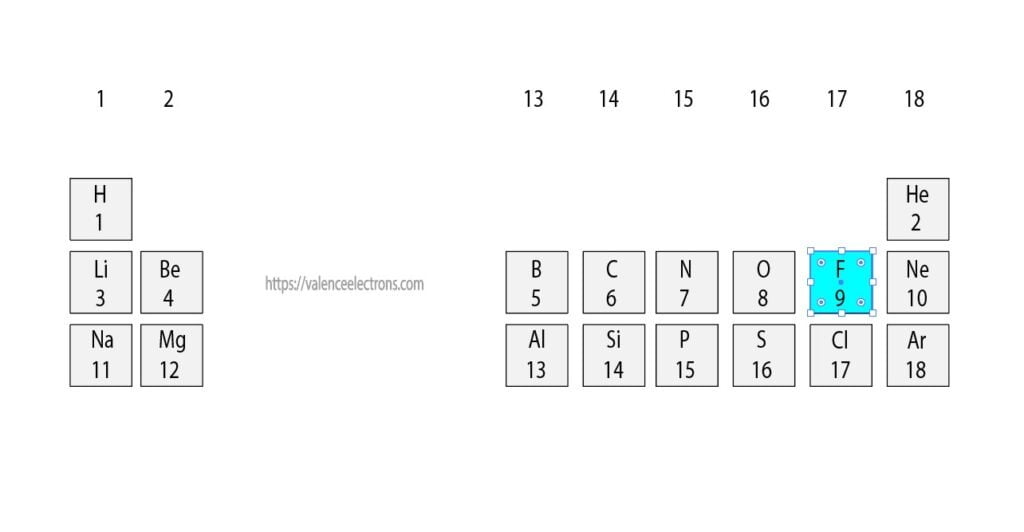
To determine the group of p-block elements, the group has to be determined by adding 10 to the total number of electrons in the last orbit.
The total number of electrons in the last orbit of the fluorine atom is seven. That is, the group number of fluorine is 7 + 10 = 17. Therefore, we can say that the period of the fluorine element is 2 and the group is 17.
How to determine the block of fluorine through the electron configuration?
The elements in the periodic table are divided into four blocks based on the electron configuration of the element. The block of elements is determined based on the electron configuration of the element.
If the last electron enters the p-orbital after the electron configuration of the element, then that element is called the p-block element.
The electron configuration of fluorine(F) shows that the last electron of fluorine enters the p-orbital. Therefore, fluorine is the p-block element.
Why fluorine is a halogen element?
The elements in group-17 of the periodic table are called halogen elements. One of the elements in group-17 of the periodic table is fluorine and the first element in group-17 is fluorine. Therefore, fluorine is a halogen element.
Bond formation of fluorine atom
Fluorine atoms form covalent bonds. Fluorine and hydrogen atoms form hydrogen fluoride(FH) compounds through covalent bonds by sharing electrons.
The electron configuration of hydrogen shows that the hydrogen atom has an electron. The hydrogen atom wants to complete its first orbit by receiving one more electron.
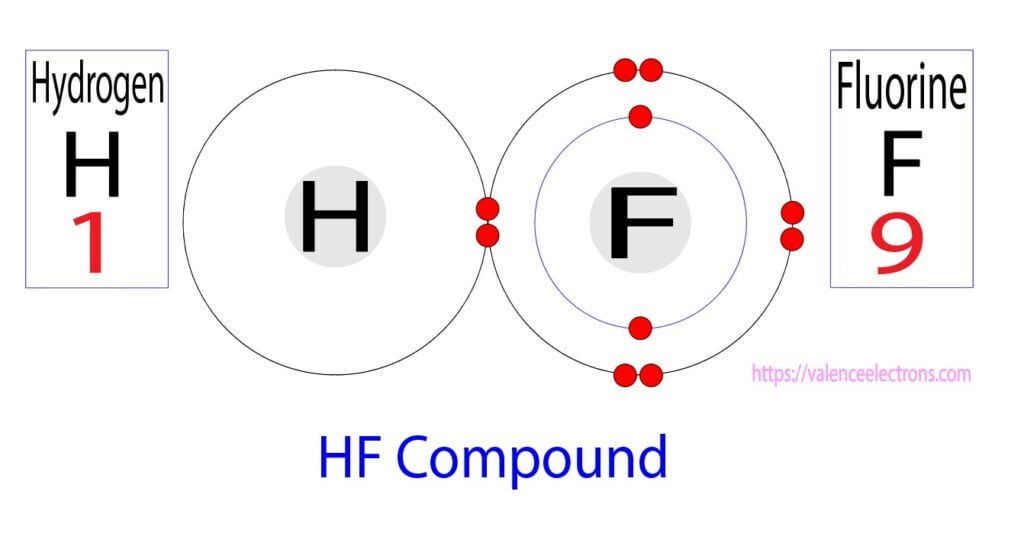
Again, the electron configuration of the fluorine atom shows that the last orbit of the fluorine atom has seven electrons. The fluorine atom wants to fill the octave by taking an electron in its last orbit.
Therefore, hydrogen and fluorine atoms share their electrons and fill the last orbit. Hydrogen and fluorine share electrons to form covalent bonds and produce hydrogen fluoride(HF) compounds.
Interhalogen reaction of chlorine
The compound formed by the reaction of two halogen elements at the required heat and pressure is called an interhalogen compound. The fluorine atom is a heavy halogen.
Fluorine atoms react with bromine(Br), chlorine(Cl), iodine(I) to form compounds BrF, ClF, ClF3, BrF3, BrF5, IF3, IF5, IF7. Of the halogen atoms, fluorine forms the most interhalogen compound.
- Cl2 + F2 (250°C) → 2ClF
- Cl2 + 3F2 (250°C) → 2ClF3
- I2 + 5F2 → 2IF5
- IF5 + F2 (270°C) → IF7
- Br2 + F2 → 2BrF
Formation of the fluorine compound
Fluorine is a highly active and electrically negative element. It is a powerful oxidation element. Fluorine combines with various elements to form compounds.
Reaction of fluorine atom with group-1 element
Fluorine atoms react with hydrogen to form fluoride compounds.
H2 + F2 → 2HF
Here, HF is water soluble. In contact with water, the H – F bond is broken down into H+ ions. Which combines with water to produce H3O+ ions.
HF + H2O → H3O+ + F–
Again, fluorine atoms react with group-1 elements to form halide compounds. Group-1 elements are Lithium(Li), Sodium(Na), Potassium(K), Rubidium(Rb), Cesium(Cs).
- 2Li + F2 → 2LiF
- 2Na + F2 → 2NaF
- 2K + F2 → 2KF
- 2Rb + F2 → 2RbF
- 2Cs + F2 → 2CsF
Reaction of fluorine atom with element of group-2
Group-2 elements are Beryllium(Be), Magnesium(Mg), Calcium(Ca), Strontium(Sr), Barium(Ba). Fluorine atoms react with group-2 elements to form compounds.
- Be + F2 → BeF2
- Mg + F2 → MgF2
- Ca + F2 → CaF2
- Sr + F2 → SrF2
- Ba + F2 → BaF2
The reaction of fluorine atom with element of group-13
Fluorine forms halide compounds at high temperatures with 13-group elements. Group-13 elements are boron(B), aluminum(Al), gallium(Ga), indium(In), thallium(Tl).
- 2B + 3F2 → 2BF3
- 2Al + 3F2 → 2AlF3
- 2Ga + 3F2 → 2GaF3
Reaction of Fluorine Atoms with Group-15 Elements
Group-15 elements are nitrogen(N), phosphorus(P), arsenic(As), antimony(Sb), bismuth(Bi), and moscovium(Mc). Fluorine atoms react with Group-15 elements to form tetrachloride and pentachloride compounds.
- N2 + 3F2 → 2NF3
- P4 + F2 → 4PF3
- P4 + 10F2 → 4PF5
The nitrogen atom alone does not form the Penta halide compound. Because nitrogen atoms do not have d-orbitals.
Reaction of fluorine atom with inert gas xenon(Xe )
In the presence of nickel, xenon, and fluorine in a 1:2 volume ratio are heated to 400 °C to produce xenon difluoride after a long time.
Xe + F2 (Ni) → XeF2
Again, xenon and fluorine gas are mixed in a 1: 2 volume ratio to produce xenon tetrafluoride at certain pressures and temperatures.
Xe + 2F → XeF4
Properties of fluorine atom
- The atomic number of fluorine atoms is 9. The atomic number of an element is the number of electrons and protons in that element. That is, the number of electrons and protons in the fluorine atom is nine.
- The active atomic mass of the fluorine atom is 18.9984.
- Fluorine is a halogen element.
- The valency(valence) of a Fluorine atom is 1 and the valence electrons of a fluorine atom are seven.
- Fluorine atoms are the 2nd period of the periodic table and an element of the 17-group.
- Fluorine is an anion element.
- Fluorine atoms form covalent bonds.
- The electron configuration of fluorine ends in a p-orbital. Therefore, it is a p-block element.
- The melting point of a fluorine atom is 53.48 K (−219.67 °C, −363.41 °F) and the boiling point is 85.03 K (−188.11 °C, −306.60 °F).
- The value electronegativity of fluorine atoms is 3.98 (Pauling scale).
- The oxidation state of fluorine is –1.
- The atomic radius of a fluorine atom is 42pm.
- Fluorine atom van der Waals radius is 135 pm.
- The ionic radius of the fluorine atom is 136pm.
- Ionization energies of fluorine atoms are 1st: 1681 kJ/mol, 2nd: 3374 kJ/mol, 3rd: 6147 kJ/mol.
- The electron addiction of fluorine atoms is –329kj/mol.
- The covalent radius of the fluorine atom is 64 pm.
- Fluorine is thermally conductive and electricity is slightly conductive.
- Fluorine is a very active and electrically negative element.
- Fluorine is a p-block element. Therefore, the ionization energy is greater than the ionization energy of the s-block element.
FAQs
What is the full electron configuration for fluorine?
The full electron configuration for fluorine is 1s2 2s2 2p5.
How can fluorine become a stable electron configuration?
The fluorine atom takes an electron to fill the octave and become stable. The electron configuration of fluoride ion(F–) is 1s2 2s2 2p6.
What is the electron configuration of a fluoride ion (F–) in the ground state?
The electron configuration of a fluoride ion (F–) in the ground state is 1s2 2s2 2p6, with two electrons in the 1s orbital, two electrons in the 2s orbital, and six electrons in the 2p orbital.
What is the complete ground state electron configuration for the fluorine atom?
The complete ground state electron configuration for the fluorine atom is 1s2 2s2 2px2 2py2 2pz1.
How many orbitals does fluorine have?
Fluorine has a total of five orbitals: one 1s orbital, one 2s orbital, and three 2p orbitals. The 2p orbitals are designated as 2px, 2py, and 2pz. So, in total, fluorine has five orbitals.
